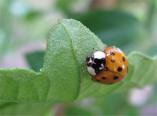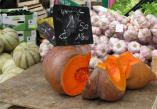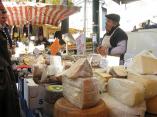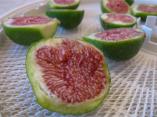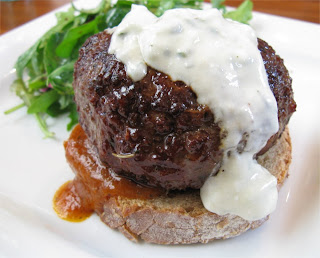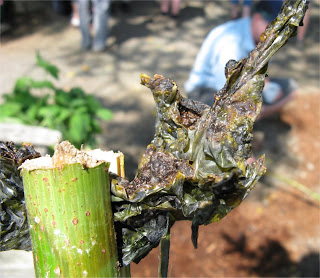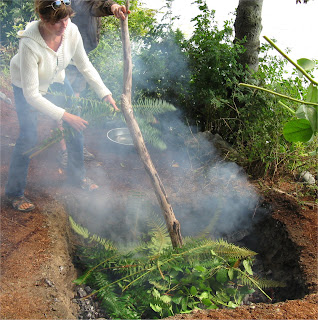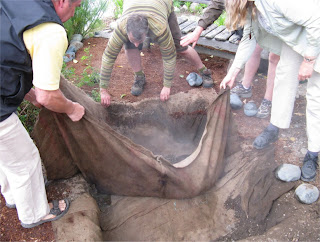Back already from a week in Shropshire, enjoying good food and better company as we whiled away the week talking about food and food writing with tutors Lindsey Bareham and Paul Bailey and enjoyed the opportunity of a lifetime to break bread with Claudia Roden, who was a delightful, articulate and well-travelled guest speaker.
On arrival last Monday it had been deemed warm and fine enough weather, after a week of record-breaking rains, to sit on the terrace for a before-dinner drink. Unfortunately this left us open to an enthusiastic welcome by hosts of Shropshire midges, wild with appetite. I had in all my years in England somehow never personally experienced midges and always imagined them as some smaller variety of mosquitoes, but now I think they are more like a tiny, carnivorous mutation of the fruit fly, which has evolved with an insatiable taste for human flesh and an instinct that causes them, en masse, to try to enter the human head by any available orifice. More like what we Canadians might call a no-see-um. Ouch, by any name.
Luckily we had a few distractions of our own: a generous sampling of excellent breads and local cheeses (clockwise from top left: Wrekin White; Stinking Bishop; Gloucestershire Brie; Shropshire Blue; and Cothi Caws Cynros goat cheese)
and some wonderful Old Spot ham
from the nearby Ludlow Food Centre,
which we visited on Wednesday. A custom-built local food shop, in essence the farm shop of the Earl of Plymouth estate, 80% of its provisions come from 4 counties (Shropshire, Worcestershire, Powys and Hertfordshire). It has a central selling area surrounded by kitchens, from which resident cheesemaker Dudley Martin produces butter and cheese;
desserts (she was finishing work on some raspberry brulees during our visit) from food prize-winner Catherine Moran’s Sweet Stuff Slow;
meats, responsibility of the centre’s butcher John Brereton (from the estate, including organic beef, lamb and traditional Old Spot pork);
coffees (roasted and ground in-house), baked goods, and preserves like this Thai Perry Pear Pickle.
It was all, as they say, food for thought and we talked about the centre for the rest of the week, with interest and ambivalence. While there I picked up a little morsel of Tipsy Cherry Fruit Cake, the handiwork of The Simply Delicious Fruit Cake Company, and it was. The jam and pate I bought at the same time will be sampled later.
We were near a pretty village called Clun, where they have a castle with views of the town:
We ate well, by our own fair hands, with a little help and challenge from Lindsey’s and Paul’s collection of recipe books. Wednesday’s team were the winners of favourite all-round meal, with some Chez Panisse chicken, roasted vegetables, baked potatoes, and a garlic, pine-nut and cream sauce to bind it,
and a self-assembly apple crumble made of 3 different apples, with rum-soused raisins, crumbly flapjack and lots of double cream.
There were many other nice things to eat and drink through the week as well….
Now I must prepare myself for a change of country and cuisine as I’m off to France tomorrow.

